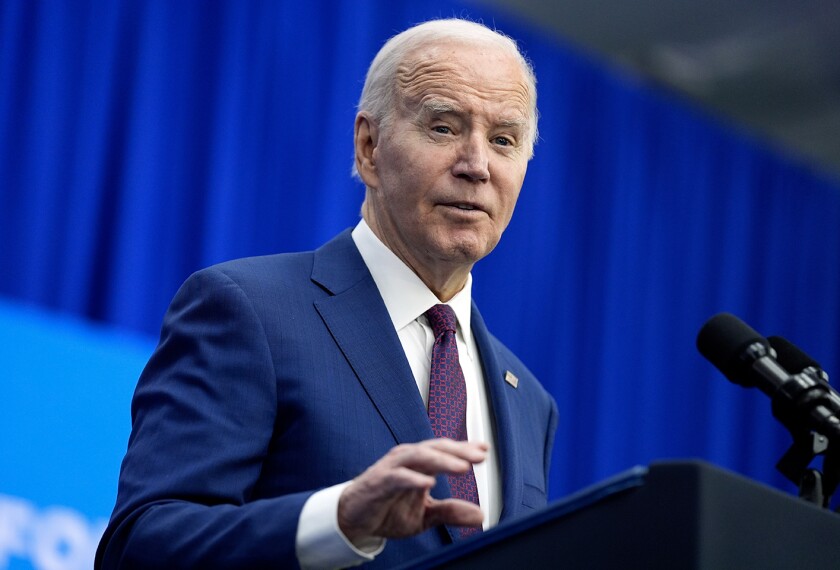Vermont
Schwarzenegger Warns Schools To Mind Spending
In his first State of the State Address, Gov. Arnold Schwarzenegger of California told school officials last week that, in light of the state’s severe, ongoing fiscal crisis, they will have to spend their money more wisely. In return, he said, he wants to help them by easing restrictions on how they spend those funds.

The Republican, who took office in November after the historic recall of Gov. Gray Davis, also promoted a $15 billion bond measure he has proposed to patch an estimated $15 billion state budget deficit for the 2005 fiscal year. The measure will go before voters in March. The state’s current budget is about $90 billion.
The alternative to the bond, the governor warned in his Jan. 6 speech, would be economic chaos. He reiterated his campaign pledge not to raise taxes, which he has argued would further hurt the economy and the state’s business sector.
Some Democrats in the legislature believe that the only way to avoid major cuts in education and other programs would be new taxes. But Gov. Schwarzenegger said that making better use of school funds would free up more money to raise per-pupil aid.
Specifically, he wants to consolidate an estimated $2 billion in categorical programs—those serving prescribed purposes—and give districts more flexibility in spending that money.
‘Blow Them Up’
He also asked the legislature to repeal a law that bars districts from contracting out services, such as busing and maintenance.
“We must give local schools the freedom to be more cost-efficient,” he said. He estimated that most schools could save 10 percent to 40 percent on the costs of nonclassroom services under his plans.
“We need some flexibility in these areas,” said Karen Stapf-Walters, the assistant executive director of the Association of California School Administrators.
But the plan could be a tough sell to the legislature, which has rejected many similar cost-saving proposals for consolidating education programs that were put forth by former Gov. Davis, a Democrat, and other lawmakers.
State lawmakers “never quite get through the process because a lot of programs have strong constituencies to defend them,” Ms. Stapf-Walters said.
Gov. Schwarzenegger also addressed the rapidly increasing cost of tuition and fees at the state’s higher education institutions, which many education advocates say are hindering students from going to college. College fees have increased more than 40 percent in the past two years, he said.
The actor-turned-politician proposed capping tuition for the state higher education system and limiting increases on fees to 10 percent each year.
The prestigious University of California system is planning to open a 10th campus in Merced, near Silicon Valley, in the fall of 2005. The governor promised that his budget proposal, which he was expected to present Jan. 9, would provide adequate funding for that new institution.
Mr. Schwarzenegger referred to his former career in Hollywood, saying that being governor was “better than being a movie star.”
But he seemed to evoke his famous role as the Terminator when he ordered a thorough review to eliminate fraud and waste in all state agencies.
“Every governor proposes moving boxes around to reorganize government,” he said. “I don’t want to move boxes around, I want to blow them up.”
—Joetta Sack
Colorado
Owens’ Aid Plans
For K-12 Are Modest
Pointing to a rebound from tough economic times, Gov. Bill Owens praised the progress made by Colorado schools in his State of the State speech last week and declared that the state’s financial strength was returning.
“Colorado is back,” he said in his Jan. 8 address. “After years of tough times and tight budgets, we’re getting stronger.”
Colorado enacted strong school accountability legislation in 2003 that improved public reporting of teacher-quality and student-dropout rates, Mr. Owens said. The state has also seen an 84 percent drop in the number of minority students attending unsatisfactory schools.
The governor said that he hopes to continue that trend by proposing student-accountability reports and introducing legislation that would ensure school choice for special-needs students. The Republican also vowed to fight a recent decision by a state judge in Denver that put Colorado’s fledgling school voucher program on hold. (“Colo. Judge Puts State’s Vouchers On Hold,” Dec. 10, 2003).
Although Mr. Owens said he would continue to make K-12 funding one of his central priorities, he acknowledged that he would not seek any dramatic increases in fiscal 2005.
Colorado’s education funding is protected by the state’s Amendment 23, which mandates an increase in K-12 education spending over the next 10 years, based on inflation and student-population growth plus 1 percent. In 2002, state education spending increased by more than 11 percent.
But an even bigger problem than precollegiate spending levels, according to some education officials, is the rising cost of tuition at colleges and universities.
“Students and their families are not ATM machines,” Gov. Owens said in his speech. “Send me an enterprise bill that protects our students and our taxpayers, and I’ll sign it.”
—Marianne D. Hurst
New York
Funding System Gets
Top Billing in Speech
Gov. George Pataki urged legislators last week to completely overhaul the state’s education finance system, but told them not to increase spending in New York’s poorest cities at the expense of wealthy areas.
“Our efforts must not pit one family against another in a divisive Robin Hood approach,” the Republican said in his 10th State of the State Address. “We cannot be taking resources from one school district to meet the needs of another.”
That approach, combined with the state’s fiscal crisis, would make it difficult to provide a large influx of money to New York City and other areas in need of aid, he acknowledged.
“Our new education finance system must appropriately focus resources, as they become available, on New York City and our other high-need school districts,” he said in the Jan. 7 speech. That might mean committing to raise spending in needy areas over the course of several years, said the governor, now in his third term.
The state faces a July 30 deadline to comply with a court order to increase spending in New York City schools. But Mr. Pataki’s budget office is estimating the state will face a $5 billion shortfall in fiscal 2005 if it doesn’t raise taxes or cut spending. The fiscal 2004 budget is $40.8 billion.
The Campaign for Fiscal Equity, which filed the lawsuit against the state that led to the order by the state’s highest court, estimates that the state needs a $2 billion “down payment” next year to comply with the order.
“As the court made clear, the educational needs of hundreds of thousands of our schoolchildren cannot wait until resources ‘become available’ in the governor’s words,” Michael A. Rebell, the campaign’s executive director, said in a statement responding to the governor’s speech.
Elsewhere in the speech, which focused primarily on economic development, Mr. Pataki said he agreed with legislative leaders who have said they oppose increasing taxes, which the legislature did last year over the governor’s veto.
—David J. Hoff
Vermont
Expanded School Choice
Is Priority for Governor
Gov. James H. Douglas put out a strong call last week for school choice in Vermont in a State of the State Address that otherwise covered little ground on education.
Mr. Douglas, a Republican elected in 2002, said he would propose to lawmakers that parents be allowed to send their children to any public school in the state wherever they live.
“The time has come to give every child, regardless of residence or economic background, a truly equal opportunity for a first-class public education that meets his or her needs,” he told the legislature as it gathered for the beginning of its session.
Gov. Douglas offered no details of the plan, although a spokesman said a district giving up pupils would not necessarily lose all state per-pupil funding for them.
The rural state has long allowed parents in towns without schools to choose schools, including secular private schools, for their children at public expense. It recently put into place a limited public-school-choice program for high schoolers elsewhere in the state.
Much of the governor’s speech described changes he hopes to make to the state tax code, most of which would not directly affect school funding. Mr. Douglas did propose a 5-cent reduction in property taxes, but that is not expected to reduce education spending in the coming fiscal year.
In his speech, Mr.Douglas also touted a new program aimed at combating childhood obesity. To that end, he said, the state would launch a public education campaign, provide grants for recreation programs, and sponsor a junior- level “winter olympics,” starting next year.
—Bess Keller




